#Joe LaBarbera
Text
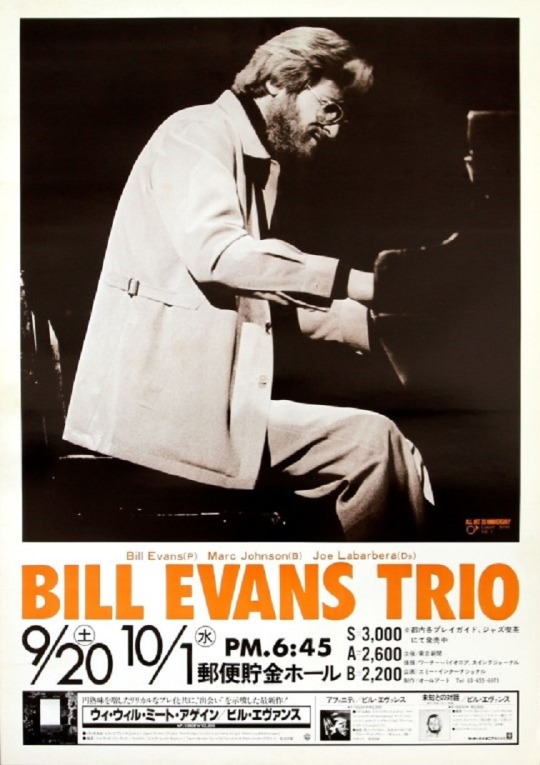
1980 - Bill Evans trio - Yubin Chokin Kaikan - Tokyo
Bill Evans (p), Marc Johnson (b), Joe LaBarbera (dr)
20 notes
·
View notes
Text

Bobby Shew Quintet with Carl Fontana – Heavyweights
“Heavyweights is the realization of Bobby Shew‘s long-time dream of collaborating with the extraordinary trombonist Carl Fontana. The St. Louis Post Dispatch hailed Heavyweights as a serious contender for album of the year.” – Editorial Reviews.
Bass – Bob Magnusson
Drums – Joe LaBarbera
Piano – George Cables
Trombone – Carl Fontana
Trumpet – Bobby Shew
3 notes
·
View notes
Text
Bill Evans Trio - Live In Stuttgart - 1979 - Past Daily Downbeat
https://pastdaily.com/wp-content/uploads/2023/12/Bill-Evans-Trio-Stuttgart-December-3-1979.mp3
Bill Evans this weekend. In concert from Stuttgart and recorded on December 3, 1979 by SWR4. He’s joined by Marc Johnson on bass and Joe LaBarbera on drums.
At the beginning of a several-week tour of the trio through the Pacific Northwest in the spring of 1979, Bill Evans learned that his brother,…

View On WordPress
0 notes
Text
Bill Evans - We Will Meet Again (Noten, Sheet Music transcription)
Bill Evans - We Will Meet Again (Noten, Sheet Music transcription)Find Bill Evans' sheet music trancriptions in our Library
We will Mett Again - The Album
Personnel
Please, subscribe to our Library. Thank you!
Bill Evans - We Will Meet Again (Noten, Sheet Music transcription)
https://www.youtube.com/watch?v=7hDx1WY4jhY
Find Bill Evans' sheet music trancriptions in our Library
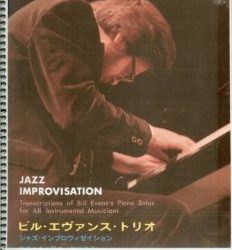
We will Mett Again - The Album
We Will Meet Again is an album by jazz pianist Bill Evans made for Warner Bros. Records in 1979. It is notable in that it is Evans's last studio recording.
After the suicide of Bill Evans' older brother, Harry, earlier in 1979, Bill made this album with his brother in mind, "We Will Meet Again" is addressed to Harry.
Just after Harry's suicide, Bill Evans started a relationship with a Canadian waitress called Laurie Verchomin, the track "Laurie" is named after her. Laurie eventually took care of Bill Evans until his death, she was the last person he saw before he died.
Personnel
Credits adapted from AllMusic.
- Bill Evans – piano
- Tom Harrell – trumpet
- Marc Johnson – bass
- Joe LaBarbera – drums
- Larry Schneider – tenor saxophone, soprano saxophone, alto flute
Production
- Helen Keane – producer
- Frank Laico – engineer, mixing
- Aram Gesar – photography
- Stew Romaine – mastering
- Chris Callis – photography
- Lee Herschberg – digital mastering (reissue)
Read the full article
0 notes
Text
Masterpiece from Marshal Herridge Titled "A Day Too Late"
Masterpiece from Marshal Herridge Titled “A Day Too Late”
New York-based jazz bassist Marshal Herridge was born in Vancouver. Among the illustrious North American jazz musicians he has shared the stage with are Anthony Wonsey, Billy Drewes, Andre White, Kirk MacDonald, Joe Sullivan, Kevin Dean, Al McClean, Remi Bolduc, Dave Laing, Lorne Lofsky, Peter Bernstein, John Scofield, Donny McCaslin, Dick Oatts, Pat Labarbera, Larry Goldings, and Brian…

View On WordPress
0 notes
Text
Joe LaBarbera- The Most Experienced Jazz Drummer
American jazz drummer/composer Joe LaBarbera was born on February 22, 1948. He is a very popular drummer known for his work with the trio of Bill Evans during Evan’s last years of his career. He came from a four-member band with Chuck Mangione and Joe Farrell. Furthermore, he stands as one of the most experienced jazz drummers today, having gone through different stages of the industry’s development.
Read more: https://zerotodrum.com/joe-labarbera/
1 note
·
View note
Text
Musical Birthday Notes - February 22nd
Musical Birthday Notes – February 22nd

View On WordPress
#Alter Bridge#Bobby Hendricks#Bobby Sparks#Bradley Nowell#Branden Boo Kreider#Creed#Del Wood#Don Van Spall#Ernie K-Doe#February Birthdays#From Ashes To New#Graham Lewis#Halestorm#Happy Birthday#James Blunt#Joe Hottinger#Joe LaBarbera#Maxx Danzinger#Molly Hatchet#Oliver#Plain White T&039;s#Projected#Set It Off#Sleeze Beez#Steve Holland#Sublime#The Drifters#The Flyers#The Swallows#Thomas Scott Flip Phillips
0 notes
Video
youtube
Jeff Ellwood feat. Alan Pasqua, Darek Oles & Joe Labarbera - The Sounds Around the House
#music
1 note
·
View note
Text
TIME MACHINE COUCH TOUR: THE BILL EVANS TRIO, MOLDE JAZZ FESTIVAL, JULY 1980
I watched this last night as a possible point of comparison with the ATOS Trio’s take on Clara Schumann’s work as a way into what I treasure in both of these formats. It’s a writing prompt I want to take up, but it will need to percolate.
In the meantime, this is one of Bill Evans’s very last performances and so noteworthy. He’s gaunt but there’s something still vibrant in late Evans, different than the go to earlier work. The voicings are there and early Evans also had a drive, but this stuff has a different urgency.
Marc Johnson is a force on bass—and I wondered how much Jaco Pastorious is in his playing. Evans has had amazing bassists always—Scott LaFaro, Eddie Gomez—so Johnson is a worthy inheritor of the tradition. He may well be the fire that makes this last trio and late Evans a treasure.
Having established the more decentralized trio concept with LaFaro and Paul Motian, in this band drummer Joe LaBarbera is less innovative. But nothing wrong with trodding that path.
There’s an interview with Evans following with rather tired questions—Miles (with Philly Joe Jones and Jimmy Cobb; Kind of Blue—professionals but a special chemistry that day), the trio with LaFaro/Motian (appreciative of what this one does too), and audience (they play for themselves primarily and deliver their craft no matter what) that more than the playing catches his twitchiness and fatigue.
It’s a 5 tune roughly half hour set with Re: Person I Knew, Days of Wine and Roses, two standards, and Nardis.
I hope I can articulate my more general thoughts about the piano trio in both traditions, but I’m glad to keep doing research like this.
2 notes
·
View notes
Photo
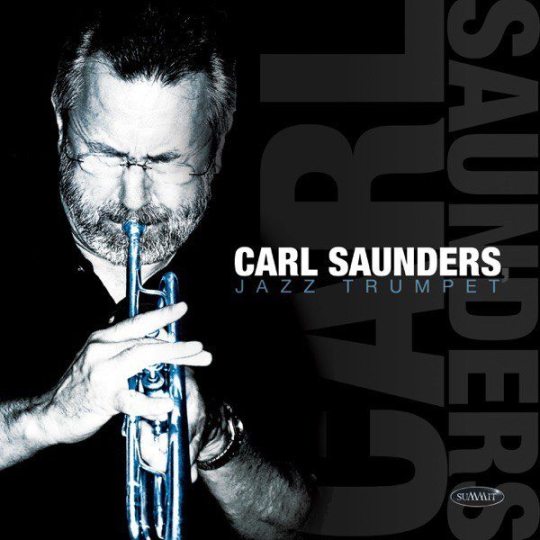
New photo posted in JAZZ по русски: '🎺Carl Saunders (родился 2.08.1942) трубач, композитор и педагог, работавший с Benny Goodman, Maynard Ferguson, Stan Kenton, Buddy Rich, Bill Holman, Clare Fischer, а также с Frank Sinatra, Ella Fitzgerald, Tony Bennett, Paul Anka и другими. 🎺Сравнительно небогатая сольная дискография музыканта пополнилась великолепным альбомом с очень простым названием Jazz Trumpet - что не требует перевода, но и возлагает большую ответственность на весь квартет, который отлично справился с этой задачей. 🎺На барабанах великий и легендарный Joe Labarbera, не менее известный басист Chuck Berghofer и молодой, но перспективный пианист Josh Nelson. В альбоме ровно половина стандартов и половина оригинальных вещей, которые станут стандартами - это говорю не только я, но и другие критики, обзоры которых я читал. 🎺Альбом, который хочется слушать еще и еще, включает в себя только одну балладу Patience - Терпение, которая так же хороша, как и все остальные композиции, исполненные в стилях #swing мейнстрим #jazz и #bebop' https://ift.tt/2YTUxRC https://ift.tt/3boGrKy
0 notes
Photo
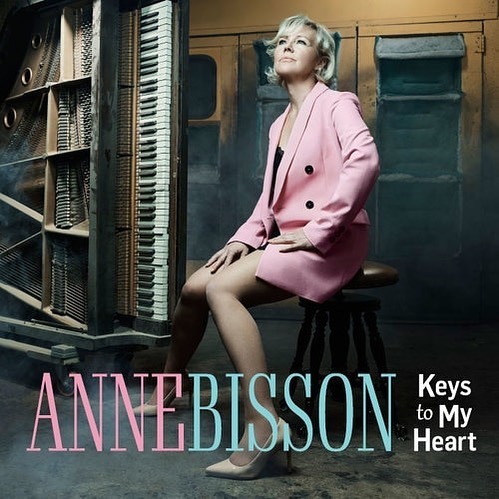
Anne Bisson Keys To My Heart One-Step Hand-Numbered Limited Edition 180g 45rpm 2LP - how cool is this release?! After a successful and diverse career of more than 20 years in almost every corner of the entertainment world, Anne Bisson returned to her first love, jazz, by releasing in 2009, Blue Mind, an album which brilliantly showcased her talents and musical creativity. Critics were unanimous, praising Anne Bisson as a natural jazz artist. With 35,000 albums in sales, she now releases a new album on which she is joined in the studio with two Los Angeles 'Jazz Giants', Joe LaBarbera on drums and Darek Oleskiewicz on acoustic bass. This new album, Keys To My Heart, contains eleven songs. Two covers: "Killing Me Softly", a perennial standard, "For Me, Formidable", a beloved song from legendary French composer/singer Charles Aznavour, which Anne sings in both English and French, and nine new songs, co-written with Anne's frequent collaborator and friend, Pierre Lenoir. These songs create a unique world, Anne's world, where they tell involving stories with warm and expressive performances that confirm the tradition of artistry and high audio fidelity that Anne has been known for so many years. Anne quickly realized that for the album to be fresh, and for her to feel totally at ease with the two musicians she would only meet on the morning of the first recording session, she had to place her trust once again in the hands of Michael C. Ross, with whom she had worked previously on her very successful Direct-to-Disc Four Seasons In Jazz album. Michael suggested she come down to Los Angeles to record at United Recording Studios in Hollywood, and that's what took place on May 16 and 17, 2019. Michael Ross says: "Studio B at United Recording is my favorite room in the world! Their microphone selection is second to none. It includes Neumann M-50s, AKG C-12s and AKG C-12As, Telefunken 251s and Neumann U-67s and U-47s. Their console is one of the few of its kind, a custom-built Neve 8068, with API 550a EQs on every channel." So be prepared to hear Anne Bisson's voice as you've never heard it before. Anne's writing and playing is beautifully enhanced by the other musician https://www.instagram.com/p/B7qvxmLpMPB/?igshid=1j1d40mdpsysr
0 notes
Text
Dado Moroni Trio - Live In Geneva - 2023 - Past Daily Downbeat
Dado Moroni – keepin’ it fresh – keepin’ it vital.
https://pastdaily.com/wp-content/uploads/2023/11/Doda-Moroni-Trio-Geneva-2023.mp3
– Dado Moroni Trio – live in Geneva – June 3, 2023 – RTS – Espace 2 –
Dado Moroni this weeked. With his trio consisting of Eddie Gomez on bass and Joe LaBarbera on drums – recorded live at the Alhambra in Geneva on June 3, 2023 and broadcast by RTS Espace 2.
We…

View On WordPress
0 notes
Text
Bill Evans Trio - A Musical analysis (sheet music)
Bill Evans Trio - What Is This Thing Called Love? A Musical analysis (with sheet music)
https://www.youtube.com/watch?v=mSr52pyHBDQ
https://www.youtube.com/watch?v=S22RsHA4K7I
Bill Evans
Bill Evans was born on August 16, 1929 in New Jersey and died on September 15, 1980.
According to Piano Red in his blog (2012) at the age of 6 he began his studies of classical piano musicals at College Southeastern Louisiana and in 1950 obtained his bachelor's degree of piano performer and teacher, with a completely classical repertoire, with works by great composers such as Bach, Brahms, Chopin, Kavalevsky and Beethoven.
Piano Red on his blog (http://www.pianored.com/bill-evans.html) mentions: Evans does not he was only a pianist, he also studied flute and violin. He also studied composition at the Mannes College of Music in New York.
In 1956, the first Evans album was released and was titled 'New Conceptions of Jazz' and that is how his most beloved and recognized saw the light composition “Waltz for Debby”.
Because of his improvisational way, ideas and unique sound, he gradually became recognized within the jazz scene in the great city of New York. It is reported that it was not until 1958 that Miles Davis proposed to join his group, where the renowned musicians were also Cannonball Adderley and John Coltrane; together with this great staff they recorded in 1959 the album “Kind Of Blue” and remains with them for almost a year traveling and recording.
The job performed together with Miles and everything learned helped this great pianist to strengthen his
reputation of his and in 1959 Bill founded his innovative trio with an incredible staff in which he is Scott LaFaro on bass and with Paul Motian on drums. With this trio they make two albums of studio, in addition to the highly regarded live sessions at the Village Vanguard in New York, in the year 1961.
In the year 1963, his album 'Conversations With Myself' was released, thus earning him his first Grammy. A year later, he toured abroad, playing in cities like Paris and Tokio.
With the passage of time, Evans' reputation grew, and he began to play in the most acclaimed clubs. In the 1970s he did hard work and recorded extensively various projects such as trios, solo piano, some quintets under his own name.
In 1978, he forms what will be his last joint trio of him with Marc Johnson on bass and Joe LaBarbera on the drums.
However, not everything was rosy in the personal life of Bill Evans since his childhood he lived in a chaotic home reigned by excessive alcohol on the part of his father, which led him to lack stability in his personal life. Bill Evans in his adulthood he had family problems and disorders in his life, mostly the main cause was addiction to narcotics.
However, this was not an impediment to continuing with the music, and he continued working even though his health was gradually deteriorating.
In the 1970s, Evans turned away from heroin, which was not an efficient outlet since he became addicted to cocaine. It was not long after that, on September 15, 1980, he was taken to the Mount Sinai Hospital and there he would pass away due to a bleeding ulcer, cirrhosis of the liver, pneumonia and chronic hepatitis.
Outside the musical aspect, Bill Evans was a lover of reading, philosophy, having a library full of great philosophers of that area. He was very attracted to painting and drawing.
A music critic qualified it and pointed out as follows: “Over time, Bill Evans has become a whole school for pianists” (Richard S. Ginell, s.f.).
There is no doubt that knowing the history of this great pianist makes us appreciate and understand in a better way how it is that Bill Evans, with a training early in classical music, made jazz an innovative world.
What Is This Thing Called Love? Melody analysis
Chromatic scale.
A chromatic scale is the succession of twelve different notes within a single eighth. Ascending and descending by semitones. However, when ascending they use sharps and when descending they use flats, as in the following example.

Ascending Descending

Mesure 25
In general, this is a very used melodic and harmonic resource in jazz. However, the sound of Bill Evans in most of his solos is present in the chromatic scale. This may or may not be in complete order.

Mesure 50

What Is This Thing Called Love? Mesures 67-68, Unordered chromatic scale
Chromatic Approximations.
A chromatic approximation is usually not diatonic to the key being played, exerting on the musical theme and moves by semitones towards a target note (Pease &
Freeman, 1989).
Bill Evans usually always made these kinds of approximations, but the target note always rests on a figure of long value, in this case on a quarter note, which gives a total feeling of stability.
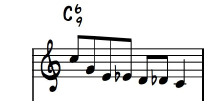
Mesure 98.
In the previous figure, it should be noted that sometimes the approximation can also solve a tension, in this case the 13th.

Mesures 102-103.

Mesure 121.
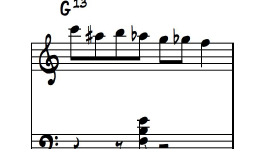
What Is This Thing Called Love? Mesure 123
Arpeggios.
First, we must define it. According to Latham (2008): 'An arpeggio is when the notes of a chord are played successively either ascending or descending, instead of being
executed simultaneously'. (p.113)

Example of arpeggio in Cmaj7
Within Bill Evans' improvisation, we find arpeggios, but sometimes he makes them from his root and other times from one of his possible inversions. Most of the time, the rhythm that these arpeggios are played are in eighth note triplets or black triplets or in turn triplets where these two figures are mixed.

Mesure 13
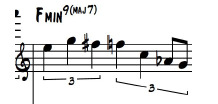
Mesure 14

Mesre 17
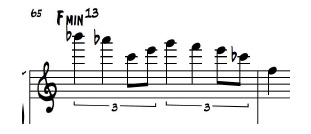
Mesure 69
Half-Whole/Whole-Half scale.
This type of scales, also called symmetric scales or “combination diminished”, are scales that move by “semitone – tone” or “tone – semitone”.
Bill Evans makes use of these scales when he has dominant chords with tensions like T9 (please, watch the below images).

Mesure 47
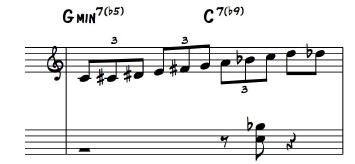
Mesure 76

Mesure 108
Harmony
Quartal chords.
A quartal chord is one that in its structure is formed by intervals of a fourth, sometimes there is an interval of a third. These kinds of chords do clearly denote Bill Evans' classical initial musical training on the piano.
Can we take as an example Erik Satie, a French composer belonging to the period of the Vanguardism and the genre of 'Classical Music', who in his work 'Les Files Des Étoiles' makes use of quartal chords and a tritone which provokes a feeling like that of an announcement or revelation?

First bars of the work of “Les Files Des Étoiles”, by Erik
satie
It is very relevant to take this example into account, since this type of composers, Evans studied at the time of his classical training and, however, some time later this guy
of harmonies was reflected in his improvisation, being very clear that he had an interest very great for joining classical musical practices with contemporary jazz.
This type of chords are very characteristic within the improvisation of Bill Evans, which provokes a totally new, innovative, tense and modal sound.
Another improvisational characteristic of Bill Evans is that when playing the quartal chords does it with a rhythm only in eighth notes, this topic will be treated in a better way in the last analysis.
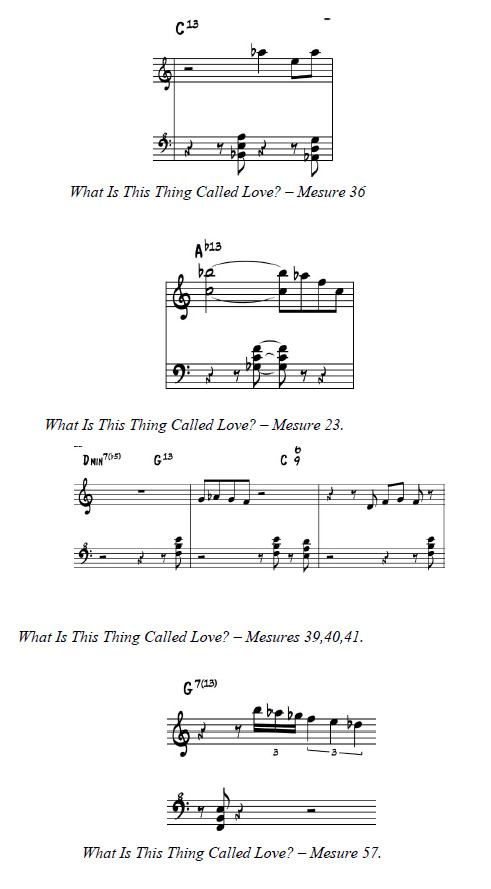

Clusters.
Before dealing with this scope, we will proceed to define it.
Clusters are voices in which the predominant interval between the adjacent notes is of a second. This widely spaced voice creates an effect thick and dissonant. The voices that contain all the seconds create the level of maximum density.
As other intervals are included, the voice opens and the density decreases. Because a smaller second interval is more
dissonant than one of the major second, voices that contain at least one minor second will have more “bite” than those containing only second greater. (Pease & Pulling, 2001, p. 93)
Bill Evans uses the clusters in the left hand always as comping6 in block while the right hand is improvising. Again this type of voicing Evans using them, he creates a totally enriching, modal and innovative atmosphere in a sound and theoretical context within the jazz.


Rhythmic
In this last section of the analysis of the solo, What Is This Thing Called Love?, presents that Bill Evans' comping was not rhythmic enough, unlike other greats
contemporary pianists of his time, such as Wynton Kelly, who had a high sense of the groove.
In this solo the comping is quite limited, mostly eighth notes, which per bar he will play them at least twice. Evans notes that he emphasized giving more “Color” to the notes with the different tensions, of which he used the most b9, # 9, b13, which gives a modal character.

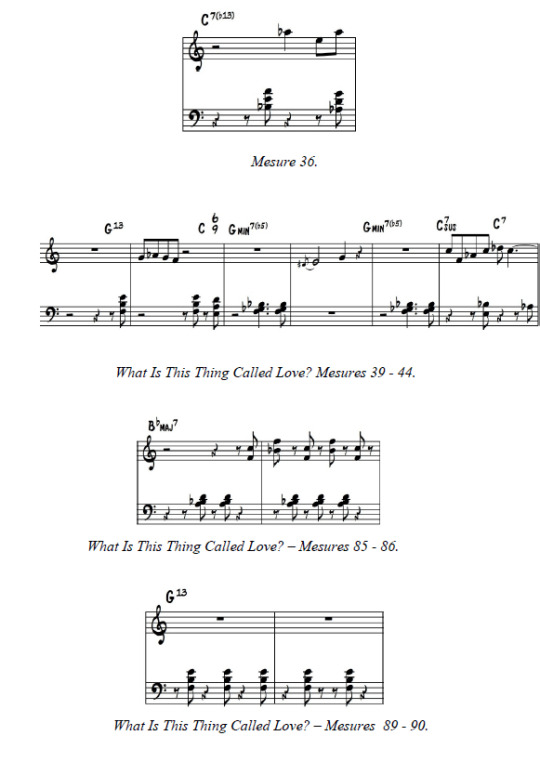
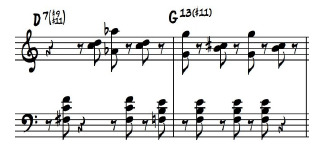
Mesures 95-96
Black and Eighth note triplets.
First we proceed to the definition of these figures. The division of a figure without a dot into three equal parts receives the triplet name. The notation of this is made with a number three aligned with the central figure. If the triplet is applied to three crotchet figures that group them (Ottman & Mainous, 1979, p.122-123).
These figures are very typical of Bill Evans within his improvisation, he is one of the characteristic features of him when differentiating his improvisational interpretation from other pianists.
Usually these triplets in the melodic aspect are being played with arpeggios; They do not have a specific direction since it varies, that is, they go ascending or descending, what makes the difference is the color with which they are played, sometimes with arpeggios as already mentioned before or with chromatic approximations.

Mesures 13-16
In the above figure, it can be clearly seen how Evans not only uses one type of triplet, but it mixes them as in measure 14 which plays them in a semi-strong beat of the compass. In general, this type of triplets (mixed quarter note and eighth note) is interpreted in semi-strong or weak beats of the measure.
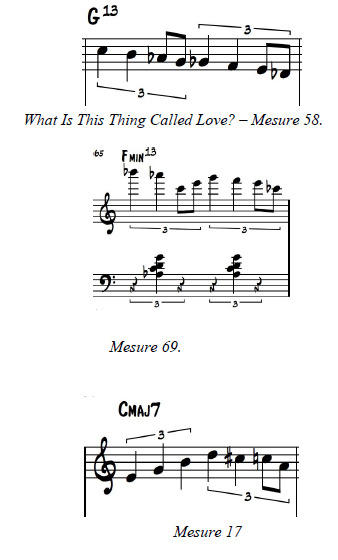
Now, in the following examples that are detailed, use the eighth note triplets and to their time also moves chromatically towards target notes of the chord.
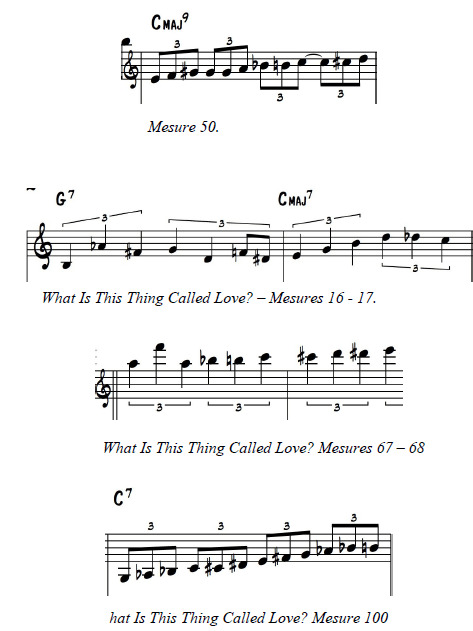

Mesures 61-63
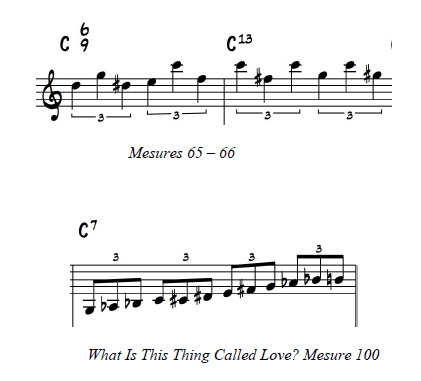
Bill Evans' improvisation is marked by originality, sonority and, above all, all the intention that in a certain way with it wants to reach or transmit a message of a search for something constant and innovative.
The theme that has been analyzed was recorded at the time
that Bill Evans was at the height of his musical career and where his knowledge acquired along with Miles and many other outstanding Jazz musicians were 'fresh', for
what is the songs of the album 'Portrait in Jazz' of 1960, makes them look clearly like maintains throughout the record material, all these characteristic features.
So, it is evident how it is that in its entirety the sound and features characteristics of Bill Evans were greatly influenced by classical music, the which was the gateway for him in the musical field. It is very clear to realize only with listen to him and as his improvisational development is very academic, however, his taste for knowing how to combine this genre and jazz make his interpretation something new, worthy of being named a new way of improvising.
Read the full article
1 note
·
View note
Video
Don Sebesky – So What
RCA Victor – 09026 68929-2 – Released in 1998. Don Sebesky – I Remember Bill (A Tribute To Bill Evans). Alto Saxophone, Soprano Saxophone, Clarinet, Flute – Lawrence Feldman. Conductor – Don Sebesky. Baritone Saxophone, Clarinet, Flute, Bass Clarinet, Bassoon – Kenny Berger. Bass – Marc Johnson. Drums – Joe LaBarbera. Flugelhorn – Tom Harrell. Guitar – Larry Coryell. Percussion – Sue Evans. Soprano Saxophone, Clarinet, Flute, Piccolo Flute – Chuck Wilson. Tenor Saxophone – Joe Lovano. Tenor Saxophone, Soprano Saxophone, Clarinet, Flute – Dave Tofani. Tenor Saxophone, Soprano Saxophone, Clarinet, Flute, Oboe, English Horn – Tom Christensen. Vibraphone – Dave Samuels.
2 notes
·
View notes
Video
My drums are loaded to MY OWN PRACTICE ROOM. I'm signed up for lessons with Joe LaBarbera and this heat ain't all bad. Thanks to everyone who reached out today to say good luck and to my beautiful wife @bexxland for always pushing me to be stronger and to come here in the first place. She's my rock and my inspiration. These next two years will rock.
5 notes
·
View notes
Photo



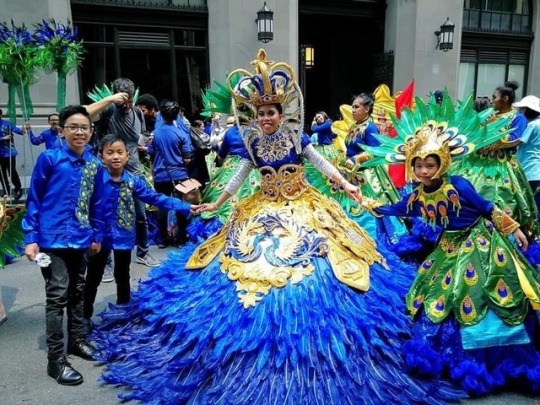
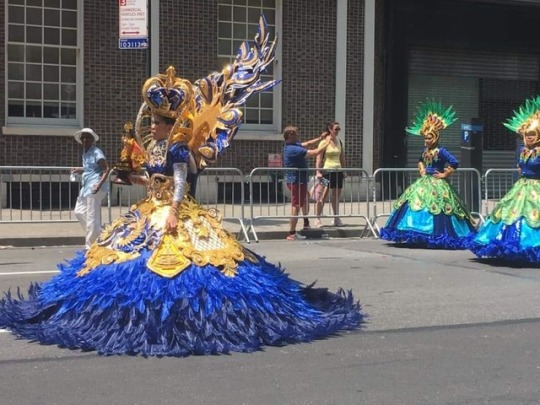
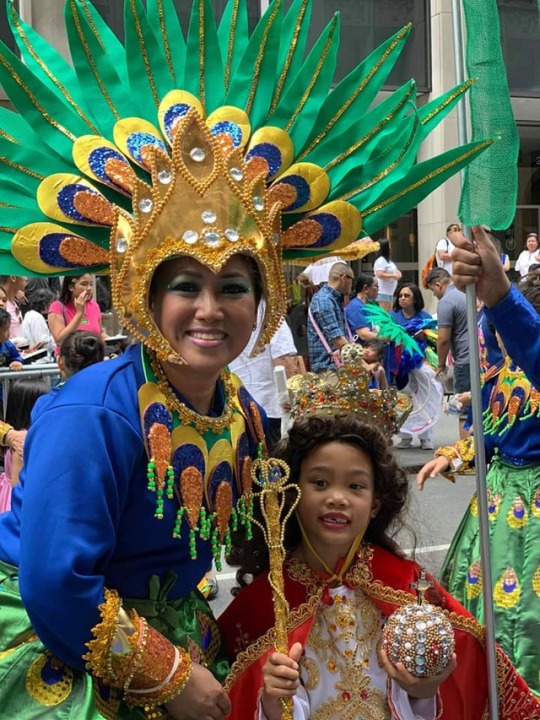
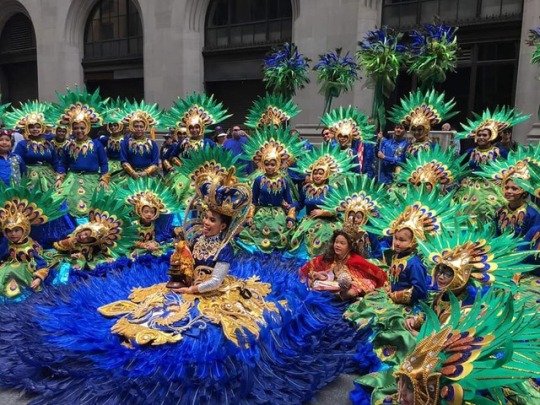
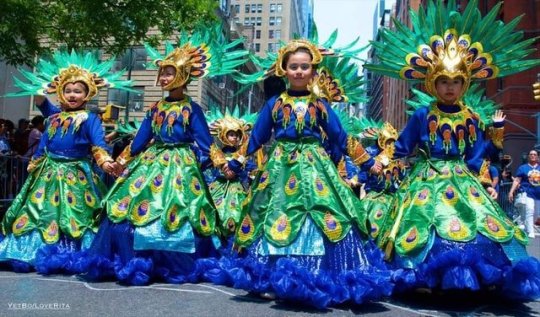


Cebuanos Engaging in Building Unity (C.E.B.U.) - Big Winner ar rhe Philippine Independence Day Parade in NYC
After a year’s absence at the Philippine Independence Day Parade in NYC, the organization came back with a vengeance! Cebuanos Engaging in Building Unity (C.E.B.U.) once again claimed their place at the top. The group has won several titles during the annual parade. This year, armed with lavish costumes and winning dance moves, they were declared Grand Winners for the Marchers Category (Street Dance).
Ably headed by their President, Helen Kwong Labarbera, the group gave all their effort this year, given a short time to prepare. Sinulog Festival Queen Hannah Diluvio’s costume designed by Orville Biongcog and executed byB-Jay Choche Menguito was truly a sight to behold as she danced her way along the pervade route.
This is the group’s third time to be victorious at the parade. They first won in 2015 then again in 2017. They plcaed third in 2014 and 2016.
The group members are very thankful for the warm support they received during the parade. Tourist and kababayans had a grand time chasing the participants at the end of the parade route just to have a picture with them.
Special mention to the following people who helped this year’s performance:
Costume Designers: Shiran Ybañez and Helen Kwong Labarbera.
Choreographers: Shiran Ybañez, Helen Kwong Labarbera, Zeny Braga, Hanna Jane Diluvio, Edynne Baclays and Axel Albao.
Music: Axel Albao Tribu Cebuano
Director: Shiran Ybañez
Tribu Cebuano Assistant Director: Gay Blanca David
Coordinator: Corrine Mae Neri Parade Head Marshal: Adela Inez
Here is the list of winners for this year’s parade:
PHILIPPINE INDEPENDENCE DAY COUNCIL, INC. 121st Anniversary Commemoration of Philippine Independence Madison Avenue, New York City OFFICIAL LIST OF WINNERS PHILIPPINE INDEPENDENCE DAY PARADE
MARCHERS CATEGORY
GRAND PRIZE: CEBUANOS ENGAGING IN BUILDING UNITY (CEBU)
FIRST RUNNER-UP: BARANGAY GINGOOGNONS IN THE UNITED STATES OF AMERICA (GIUSA)
:SECOND RUNNER-UP:TALISAY ASSOCIATION (USA) BATANGAS (TAUSA)
FLOATS CATEGORY
GRAND PRIZE: FILIPINO SOCIAL CLUB OF NEW YORK, INC.
FIRST RUNNER UP: THE FILIPINO APOSTOLATE OF ST. PATRICK’S CHURCH OF LONG ISLAND CITY
SECOND RUNNER UP: NEW YORK STATE NURSES ASSOCIATION PARADE
JUDGES 2019 Joe Carollo, John De Soto, Dr. Joseph Calderon, Dr. Carsten Gaeser, Froilan Sarenas
TABULATORS: Neva Fajardo, MEdy Roan (PICPA)
PARADE CHAIRPERSONS 2019 Rely Manacay * Margie Wisotsky PIDCI PRESIDENT Antero Martinez
JUDGING CRITERIA Creativity 25%, Theme 25%, Impact 25%. Detail 25%
0 notes